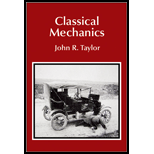
Concept explainers
(a)
The electric field and magnetic field in the charge’s rest frame
(a)
Answer to Problem 15.110P
The electric field in the charge’s rest frame
Explanation of Solution
Figure 1 represents the point P with position vector

Since the charge is in rest frame
Write the equation for
Here,
Since the net electric field in
Since the net electric field in
Conclusion:
Therefore, the electric field in the charge’s rest frame
(b)
To show that electric field as
(b)
Answer to Problem 15.110P
It is shown that electric field
Explanation of Solution
Write the expression for
Here,
Write the expression for
Here,
Rearrange the above equation, to get
Here,
Since
Write the expression for
Here,
Rearrange the above equation to get
Here,
Since
Write the expression for
Here,
Write the expression
Here,
Rearrange the above equation to get
Here,
Write the expression for
Here,
Rearrange the above equation to get
Here,
From equation (III).
Since
Since the value of
Since
From equation (VIII),
Since
From equation (V),
Since
Since the value of
Since
From equation (IX),
Since
From Lorentz transformation,
Write the equation for
From Figure 1 it is known that
Write the expression for
Use equation (XV) and
Use
Rearrange the above equation.
Since
Use equation (XVI), and
Use equation (XVI), and
Use equation (XVI), and
Write the expression for
Use equation (XVII), (XVIII), and (IX) in the above equation.
Conclusion:
Therefore, It is shown that electric field
(c)
To sketch the behavior of field strength as a function of
(c)
Answer to Problem 15.110P
The behavior of field strength as a function of
Explanation of Solution
Figure 2 represents the behavior of field strength as a function of

Conclusion:
Therefore, the behavior of field strength as a function of
Want to see more full solutions like this?
Chapter 15 Solutions
Classical Mechanics
 College PhysicsPhysicsISBN:9781305952300Author:Raymond A. Serway, Chris VuillePublisher:Cengage Learning
College PhysicsPhysicsISBN:9781305952300Author:Raymond A. Serway, Chris VuillePublisher:Cengage Learning University Physics (14th Edition)PhysicsISBN:9780133969290Author:Hugh D. Young, Roger A. FreedmanPublisher:PEARSON
University Physics (14th Edition)PhysicsISBN:9780133969290Author:Hugh D. Young, Roger A. FreedmanPublisher:PEARSON Introduction To Quantum MechanicsPhysicsISBN:9781107189638Author:Griffiths, David J., Schroeter, Darrell F.Publisher:Cambridge University Press
Introduction To Quantum MechanicsPhysicsISBN:9781107189638Author:Griffiths, David J., Schroeter, Darrell F.Publisher:Cambridge University Press Physics for Scientists and EngineersPhysicsISBN:9781337553278Author:Raymond A. Serway, John W. JewettPublisher:Cengage Learning
Physics for Scientists and EngineersPhysicsISBN:9781337553278Author:Raymond A. Serway, John W. JewettPublisher:Cengage Learning Lecture- Tutorials for Introductory AstronomyPhysicsISBN:9780321820464Author:Edward E. Prather, Tim P. Slater, Jeff P. Adams, Gina BrissendenPublisher:Addison-Wesley
Lecture- Tutorials for Introductory AstronomyPhysicsISBN:9780321820464Author:Edward E. Prather, Tim P. Slater, Jeff P. Adams, Gina BrissendenPublisher:Addison-Wesley College Physics: A Strategic Approach (4th Editio...PhysicsISBN:9780134609034Author:Randall D. Knight (Professor Emeritus), Brian Jones, Stuart FieldPublisher:PEARSON
College Physics: A Strategic Approach (4th Editio...PhysicsISBN:9780134609034Author:Randall D. Knight (Professor Emeritus), Brian Jones, Stuart FieldPublisher:PEARSON





